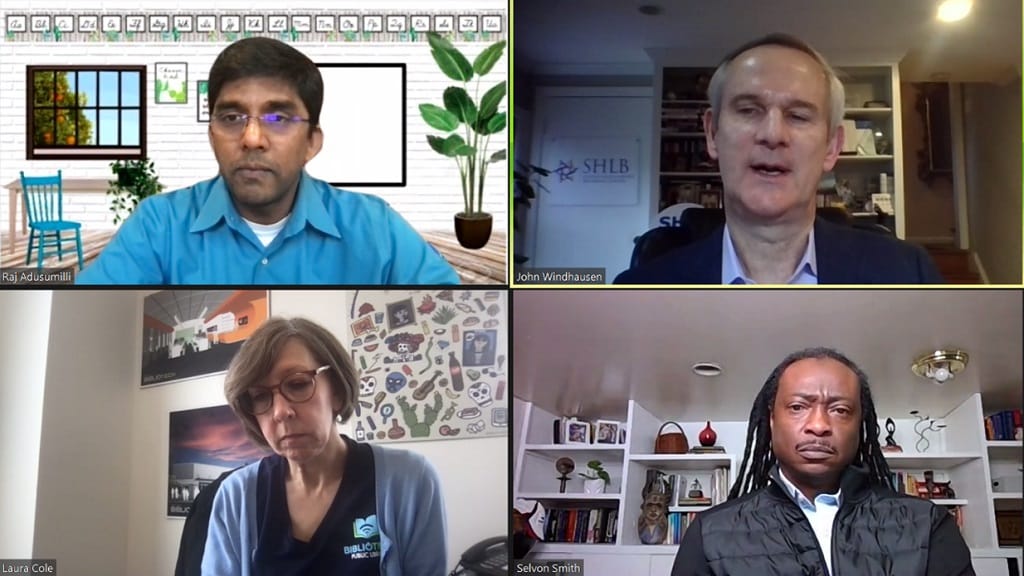Schools And Libraries Look For Solutions With $7 Billion In Federal Help
April 6, 2021 – In a webinar last week hosted by the Schools, Health, and Libraries Broadband Coalition (SHLB), panelists discussed opportunities schools and libraries have to better serve their communities with the recent $7 billion provided through the American Rescue Plan, a $1.98 trillion corona
Derek Shumway

April 6, 2021 – In a webinar last week hosted by the Schools, Health, and Libraries Broadband Coalition (SHLB), panelists discussed opportunities schools and libraries have to better serve their communities with the recent $7 billion provided through the American Rescue Plan, a $1.98 trillion coronavirus relief package passed by Congress and signed into law by President Biden on last month.
Laura Cole, director at the BiblioTech public library, shared how a successful pilot program with Southwest Independent School District made a goal to provide digital access to 100 students. To date, 62 students had broadband installed with the remaining still being worked on. The project was done to act as a proof-of-concept for digital connection expansion in Bexar County, Texas, where broadband access rates are low. Though the program’s success has caused it to be extended through December 31, 2021, Cole said she recognizes that there needs to be a more permanent solution to close the digital divide in all areas where people lack internet.
At the Brooklyn Public Library in New York City, Selvon Smith, president of information technology and chief information officer at the library, said that collaborative programs with the New York Public Library, Queens Public Library, and the New York City Department of Education were able to provide thousands of free hotspot devices for the entire school year to under-connected people. The organizations created a “Bookmobile Wi-Fi” program that was comprised of three vans and one truck stocked with laptops and outfitted with Wi-Fi antennas.
And it’s not just libraries that benefitted from the $7 billion provided through the American Rescue Plan. Rajesh Adusumilli, assistant superintendent for information services at Arlington County public schools (APS), said his organization worked to address student connectivity needs throughout the pandemic. The rollout of the 1-2-3 Connect Me pilot program was a core part along with maintaining Comcast’s Internet Essentials Program sponsorship and continuing to provide devices and wireless access hotspots at Arlington’s public schools.
This pilot program was financed by the Virginia governor’s Fasttrack Broadband Funding program, and is an extension of broadband services off of the APS and county-owned fiber network.
It uses technology on the Citizens Broadband Radio Service spectrum band, which has allowed private networks solely meant for students. It allows for students to connect to the APS network from home so they can continue distance learning instruction and access APS resources. It also can save money as it does not require the county to build additional fiber to create the extension.
Now, all Arlington Public Schools are set up with wireless access, with 99.2 percent of all APS students having participated successfully in synchronous learning activities.









Member discussion